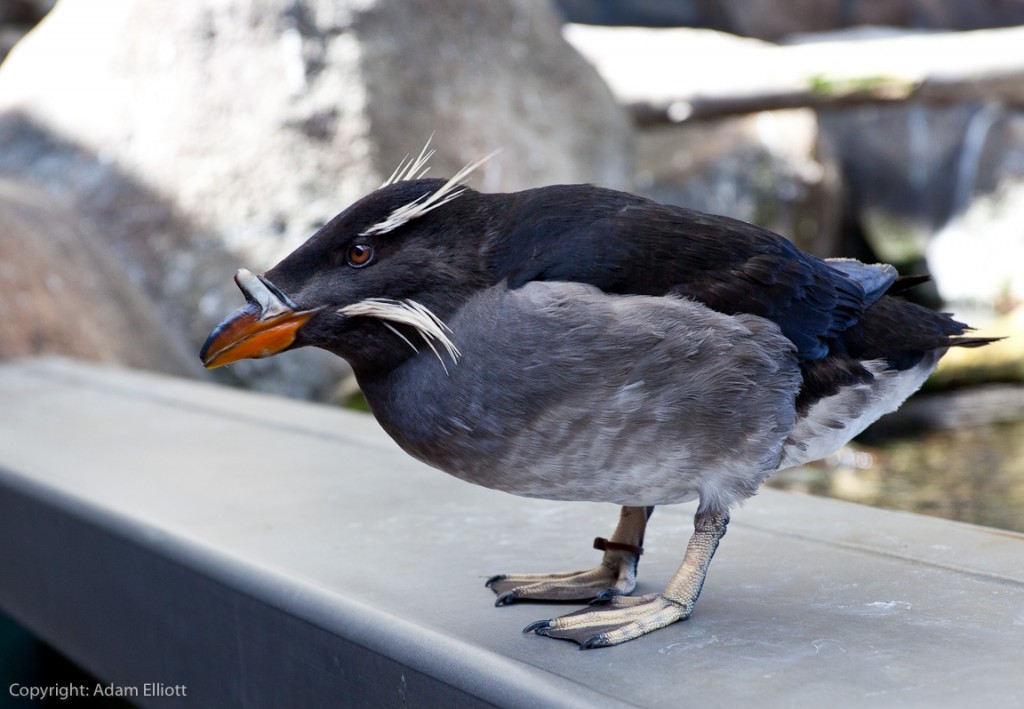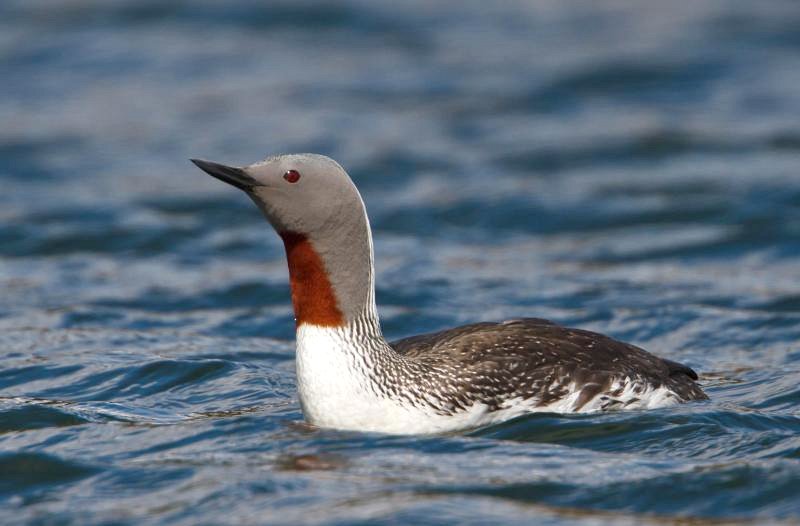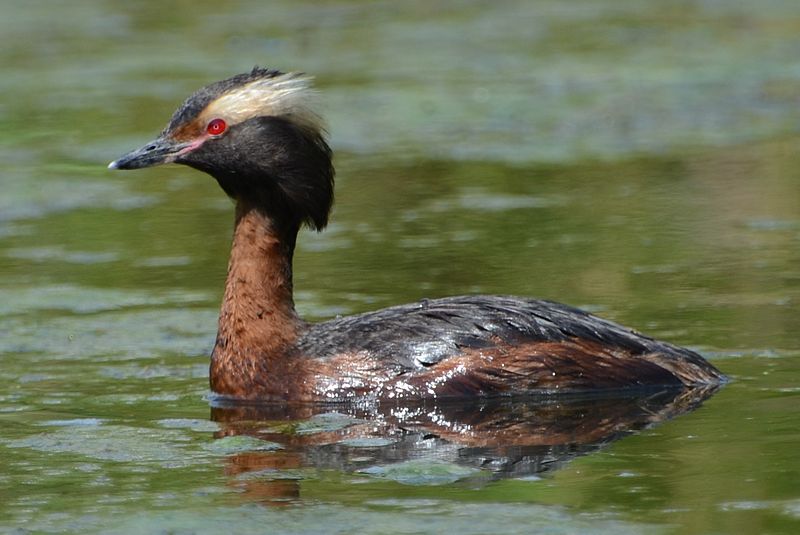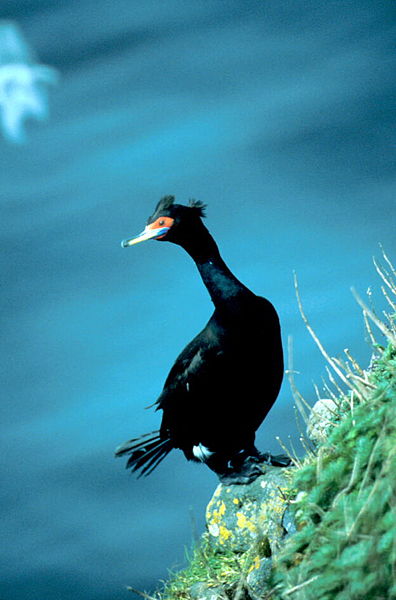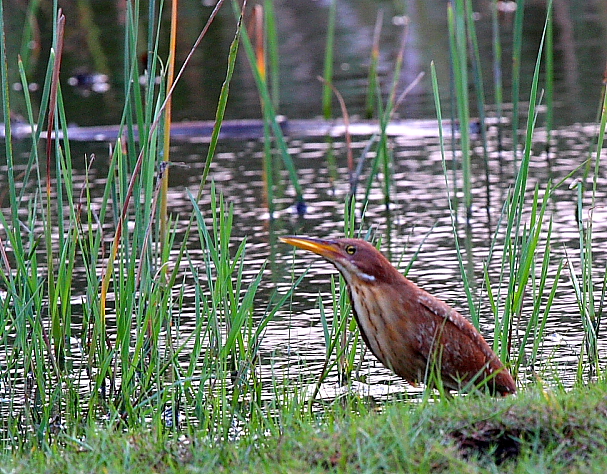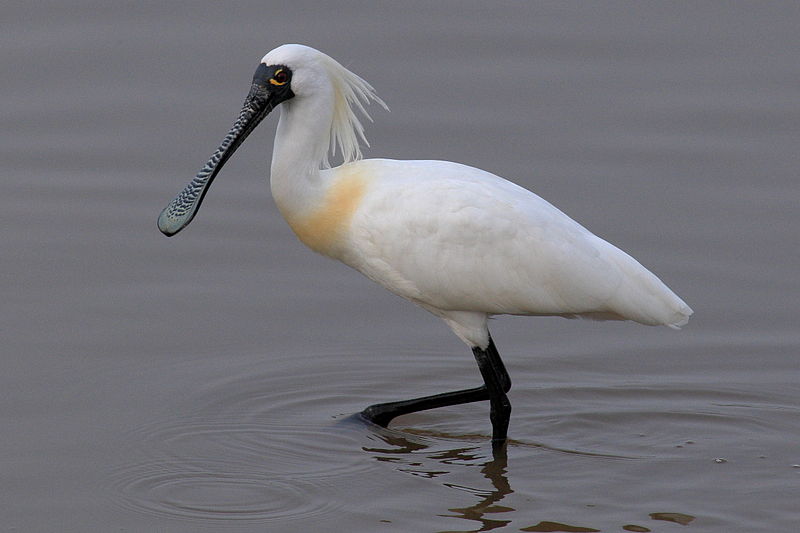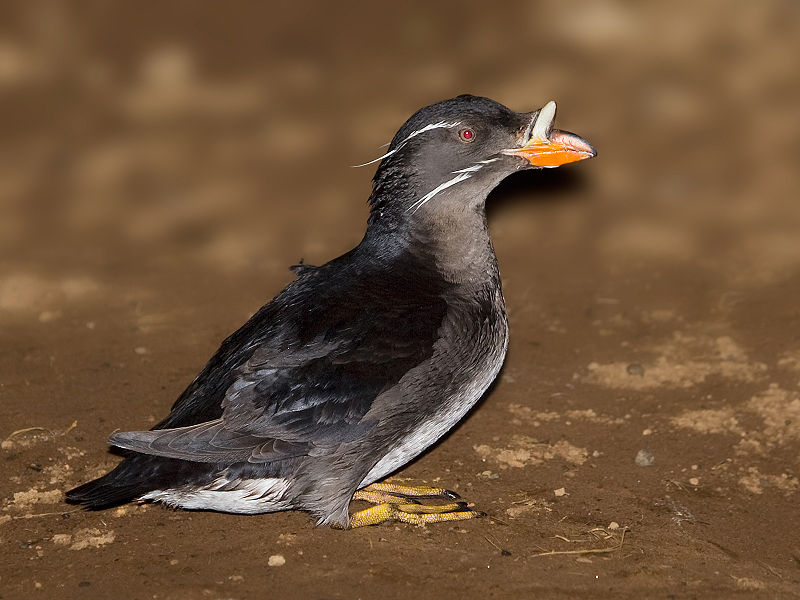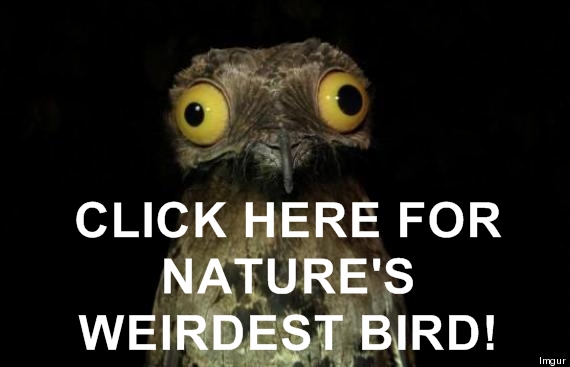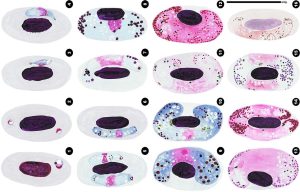The Beautiful Birds Of Korea
Here’s a handful of the lovely species you’ll find on the Korean peninsula:
Red-Throated Loon
Chosen not just because of its excellent name, but also because it’s a good-looking guy. The red-throated loon breeds in the north of the northern hemisphere and only gets its trademark red spot when it’s time to show off to the ladies.
The loon is well adapted for aquatic life with particularly dense leg bones that allow them to sink into the water. The legs are situated far back on their body, helping to efficiently propel the loon along. Bird bones are normally pneumatic, i.e., they contain a lot of air spaces in them as an adaptation for flight: less bone = less weight.
Its razor sharp bill is another bonus for cutting through the water on a submarine hunt.
Horned Grebe
The horned grebe, or Slavonic grebe, is another talented swimmer and has no troubles out-swimming fish underwater for lunch. This proficiency in water means that the grebe looks like a dunce when traveling on foot, but you can’t be good at everything.
Other nicknames this bird has accrued include devil-diver, hell-diver, pink-eyed diver, and water witch. It’s not clear how it feels about these dark pseudonyms.
In a native Indian folk story, an old man tricks a bunch of ducks into dancing with their eyes closed so that he can kill them off one by one. The first duck to get suspicious, open his eyes, and raise the alarm was a horned grebe. Clever chaps, you see.
Red-Faced Cormorant
Cormorants are excellent divers, swimmers and fishers. They live in coastal regions throughout the globe. The red-faced cormorant is one of the rarer types and less is known about it than its non-red-faced cousins.
They don’t have too many predators, occasionally a sea otter will have a go, or an eagle, but otherwise it’s only man that troubles them.
Cinnamon Bittern
Like other bitterns, the cinnamon bittern spends a lot of time on the ground and, when startled, sticks its neck and head straight up into the air and virtually vanishes amongst the reeds.
Black-faced Spoonbill
The black-faced spoonbill is one of the oddest looking birds on the Korean peninsula. They use their spoon-shaped bill in a sweeping motion to detect prey. Black-faced spoonbills are the rarest in the spoonbill family with as few as 1,600 adults in the wild.
Yellow-Legged Button Quail
These odd little fellas aren’t actually related to quails but do resemble them. Like quails, the button quails are diminutive, starting at around 10 cm in length. They live in the scrub-lands of Asia.
Female button qualis have a unique vocal organ formed by an enlarged trachea and an inflatable bulb in the oesophagus, which they use to produce a booming call.
Rhinoceros Auklet
The Rhinoceros Auklet is a relative of the ever-popular and colourful puffin. Also known as the unicorn puffin, it sprouts this weird nose horn during the breeding season. Like puffins, these auklets are crap at flying and live in burrows underground. They are the only living member of the genus Cerorhinca.
And there you go, a pleasant smattering of some of the lovely little feathered fellas of the Korean peninsula. Now, click on the image below to have a look at this weird guy:

